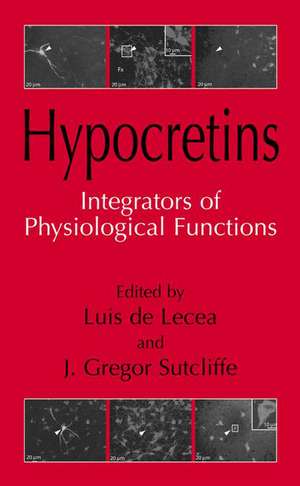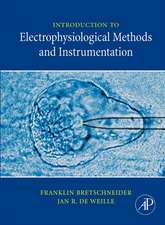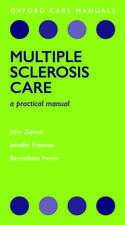Hypocretins: Integrators of Physiological Signals
Editat de Luis De Lecea, J. Gregor Sutcliffeen Limba Engleză Hardback – 29 sep 2005
| Toate formatele și edițiile | Preț | Express |
|---|---|---|
| Paperback (1) | 648.74 lei 6-8 săpt. | |
| Springer Us – 27 noi 2014 | 648.74 lei 6-8 săpt. | |
| Hardback (1) | 655.13 lei 6-8 săpt. | |
| Springer Us – 29 sep 2005 | 655.13 lei 6-8 săpt. |
Preț: 655.13 lei
Preț vechi: 770.73 lei
-15% Nou
Puncte Express: 983
Preț estimativ în valută:
125.36€ • 134.05$ • 104.52£
125.36€ • 134.05$ • 104.52£
Carte tipărită la comandă
Livrare economică 17 aprilie-01 mai
Preluare comenzi: 021 569.72.76
Specificații
ISBN-13: 9780387250007
ISBN-10: 038725000X
Pagini: 441
Ilustrații: XXIV, 441 p.
Dimensiuni: 155 x 235 x 25 mm
Greutate: 0.83 kg
Ediția:2005
Editura: Springer Us
Colecția Springer
Locul publicării:New York, NY, United States
ISBN-10: 038725000X
Pagini: 441
Ilustrații: XXIV, 441 p.
Dimensiuni: 155 x 235 x 25 mm
Greutate: 0.83 kg
Ediția:2005
Editura: Springer Us
Colecția Springer
Locul publicării:New York, NY, United States
Public țintă
ResearchCuprins
Discovery of the Hypocretins/Orexins and Their Receptors.- The Discovery of the Hypocretins.- Orexin and Orexin Receptors.- Animal Models in the Study of the Hypocretinergic System.- Rodent Models of Human Narcolepsy-cataplexy.- The Canine Model of Narcolepsy.- Detailed Anatomy of the Hypocretinergic System and Related Hypothalamic Circuits.- Anatomy of the Hypocretin System.- The Anatomy of Hypocretin Neurons.- Transmitter-Identified Neurons and Afferent Innervation of the Lateral Hypothalamic Area.- Physiological Consequences of Hypocretin Activation.- Physiological Characteristics of Hypocretin/Orexin Neurons.- The Ne System as a Target for Hypocretin Neurons.- Hypocretin/Orexin Actions on Mesopontine Cholinergic Systems Controling Behavioral State.- The Aminergic Systems and the Hypocretins.- Effects Of Hypocretin/Orexin on the Thalamocortical Activating System.- Pharmacology of the Hypocretins and Drug Design.- In Vivo Pharmacology of Orexin (Hypocretin) Receptors.- Intracellular Signal Pathways Utilized by the Hypocretin/Orexin Receptors.- The Hypocretins in Narcolepsy and Arousal.- The Hypocretins and Narcolepsy.- An Approach to Determining the Functions of Hypocretin (Orexin).- Hypocretin in Neuropsychiatric Disorders.- Hypocretin/Orexin and Sleep.- Modulation of Cortical Activity and Sleep-Wake States by Hypocretin/Orexin.- The Hypocretins in Feeding and Energy Balance.- Regulation of Hypocretin by Metabolic Signals.- The Hypocretins in Addiction and Hyperarousal.- Hypocretin and Brain Reward Function.- Orexin/Hypocretin and Opioid Dependence.- Dopamine-Hypocretin/Orexin Interactions.- Hypocretin/Orexin in Stress and Arousal.- Role of Hypocretins on Peripheral Systems.- The Hypocretins/Orexins and the Hypothalamo-Pituitary-Adrenal Axis.- Orexins (Hypocretins) in the Gut.- Hypocretins in Endocrine Regulation.- The Hypocretins in Cardiovascular Regulation.
Caracteristici
Represents an interdisciplinary approach to hypocretins that reviews the role of these neuropeptides in neurological disease Includes supplementary material: sn.pub/extras















